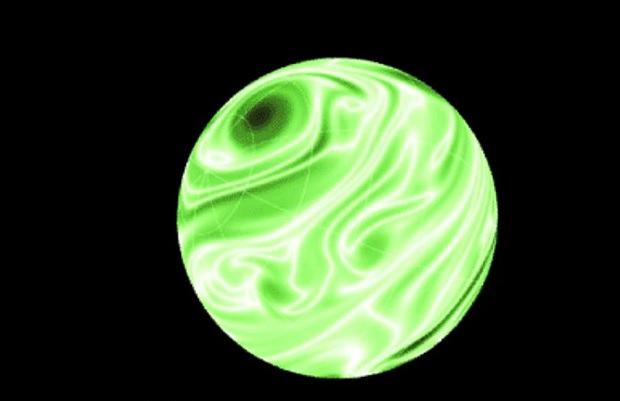Unveiling TrES-4b: A Mysterious Massive Exoplanet.
Astronomers have recently detected a planet of extraordinary size within the vast expanse of our universe. This remarkable celestial body, named TrES-4b, is located an astonishing 1,400 light-years away in the constellation of Hercules, a region renowned for its numerous cosmic revelations. Encircling the radiant star GSC 02620-00648, which emits a luminosity three times greater than our own Sun, this exoplanet possesses a distinctive array of characteristics that have captivated both the scientific community and space enthusiasts. At FreeAstroScience.com, we are delighted to present an extensive exploration of this fascinating discovery, elucidating intricate scientific concepts in a manner that resonates with readers worldwide.
The Enigma of TrES-4b: Size, Density, and Orbital Peculiarities
TrES-4b is an exoplanet that defies expectations with its scale and physical properties. Despite having a mass that is roughly 90 percent that of Jupiter, the largest planet in our Solar System, TrES-4b’s diameter is approximately twice as large, expanding about 170 percent more than Jupiter. As a result, TrES-4b not only holds the title of being the largest known exoplanet in terms of volume but also boasts the distinction of being the least dense. Its vast size contributes to its exceptionally low density. This exoplanet completes a rapid orbit around its parent star every 3.5 days, periodically eclipsing it. This dance between the planet and its star provides astronomers with valuable insights into the properties of TrES-4b and the nature of its stellar companion.
Exploring the Anomalies: Internal Heat and Stellar Interaction
Extensive research has been conducted to comprehend the forces at play due to the unique dimensions and density of TrES-4b. A prominent hypothesis suggests that the planet’s internal heat, coupled with its close proximity to its host star, plays a crucial role. The distance between TrES-4b and GSC 02620-00648 is a mere one-eighth of the distance between our Sun and Mercury, subjecting the planet to extreme temperatures surpassing 1,500 degrees. This extremely hot environment is likely a significant contributing factor to the planet’s enlarged size and reduced density.
A Cosmic Clock Ticking: The Inevitable Demise of TrES-4b
At FreeAstroScience.com, our dedication lies in delivering up-to-date and trustworthy scientific knowledge to our audience. The revelation of TrES-4b’s intriguing twist, involving the presence of not one, but two stars in its system, adds a captivating element to our understanding of celestial bodies in the universe. This ongoing research into the characteristics of TrES-4b provides a compelling narrative that highlights the diversity and dynamism of these distant worlds. It serves as a reminder of the ever-evolving nature of the cosmos and our position within it. For more captivating updates and profound insights into the wonders of the universe, stay connected to our global science blog.
Do not forget to share your opinion with us to provide you with the best posts !




0 Comments